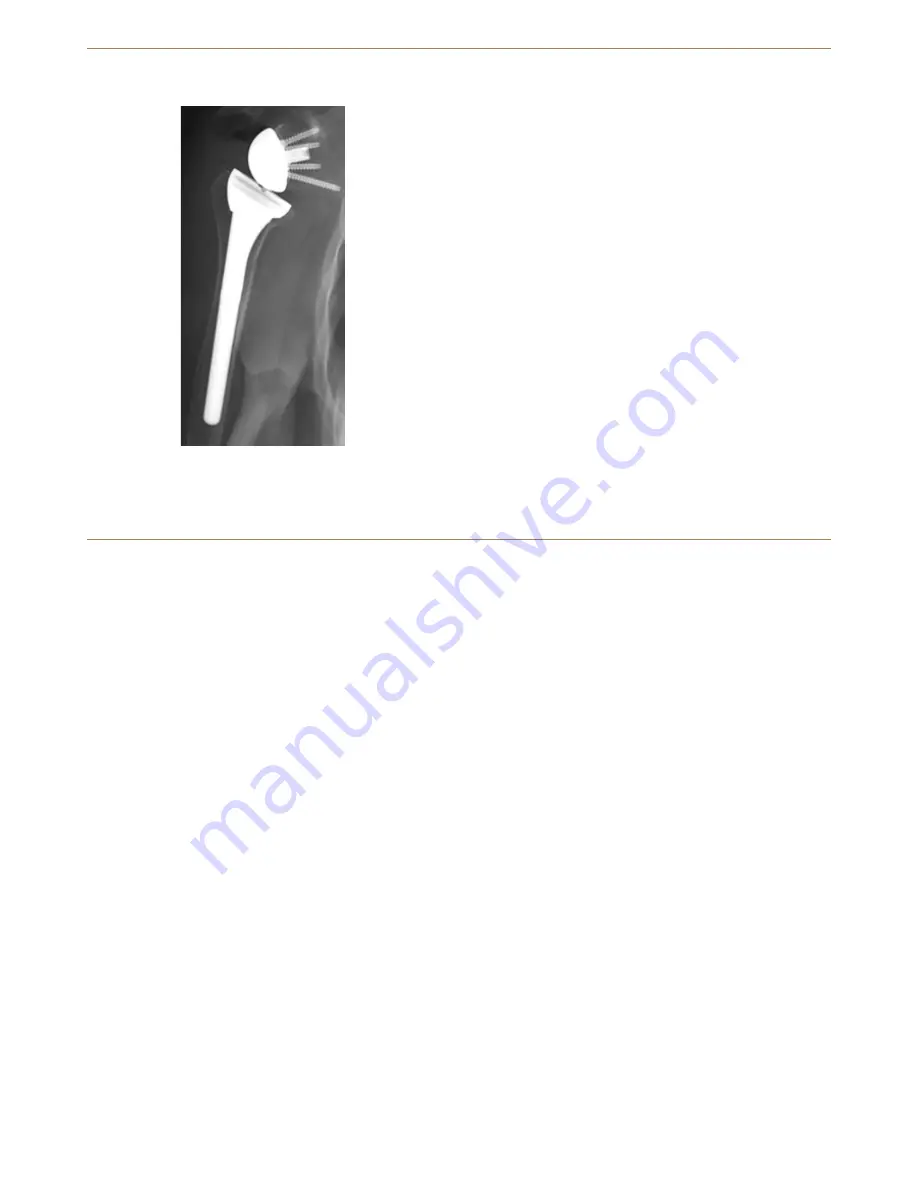
51
50
Post-Operative Management
Closure
Assemble the DELTA XTEND cTA head reamer with the
T-handle. Ream the area around the epiphysis using a
power tool (Figure 96). if the DELTA XTEND cTA head trial
does not obtain perfect seating on the epiphysis, finish
the preparation using appropriate rongers.
choose the appropriate size of DELTA XTEND cTA head
using the trial heads. The version of the head should
be chosen to match the patient anatomy. This requires
that the head is rotated in the proper orientation before
impacting.
Then gently impact the appropriate final head implant
using the humeral head impactor (Figure 97). make sure
that the junction surfaces between the components are
clean and free of any soft tissue before impaction.
Appropriate post-operative physiotherapy is an important
factor in the outcome of this procedure, since stability
and mobility now depend on the deltoid alone. The
physiotherapy programme, which should be planned to
suit each individual patient, consists of two phases:
eat and write, but should not use it to push behind the
back or to raise themselves from the sitting position to
the standing position. in conjunction with these exercises
for scapulohumeral recovery, it is important to strengthen
muscle connection with the scapula in order to facilitate
muscle and implant function. passive exercise in a
swimming pool is recommended as soon as scars begin
to form. More caution is required to protect the deltoid
muscle from excessive demand if a superior approach has
been used for surgery.
2. Late phase (after 6 weeks)
After the sixth or seventh week, active strengthening
movements may gradually be added to the programme.
These exercises, which closely follow everyday activities,
are to be performed in a sitting or standing position
using conventional methods, with isometric exercises and
resistance movements becoming increasingly important.
A series of exercises for rhythmic stabilisation of the
upper arm as well as eccentric work on lowering the arms
complete the strengthening of the muscles. physiotherapy
should be performed until satisfactory autonomy is
reached by the patient.
irrigate the joint space and clear it of any remaining
debris. Then repair the subscapularis if possible, but in
doing so retain the ability to externally rotate to at least
0˚. The anterior deltoid should be firmly sutured at the
fibrous acromial perimeter or using transosseous stitches.
Next, place a drain beneath the delto-pectoral interval,
close it using zero or number one absorbable sutures.
Then close the subcutaneous tissue with a 2.0 absorbable
suture. Finally, approximate the skin edges with adhesive
paper tape and follow with a sterile dressing. Layered
closure of the soft tissues normally leads to an adequate
range of motion without instability.
1. Early phase (0 to 6 weeks)
Two days after the operation, the patient can be
mobilised. This early phase is dedicated to gentle and
gradual recovery of the passive range of shoulder motion:
abduction of the scapula, anterior elevation and medial
and lateral rotation. An abduction cushion may be used
to relieve deltoid tension. physiotherapy is predominantly
performed with the patient supine, passive and with
both hands holding a bar that is manipulated by the
contralateral hand, as described by Neer. The patient is
encouraged to use the affected arm post-operatively to










































